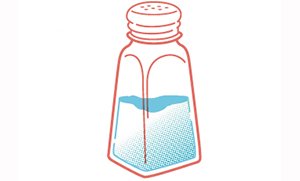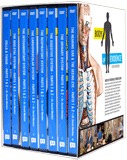Water in Your Lungs—What a Relief
The secret ingredient to continual breathing? Water.
Then the LORD God formed the man of dust from the ground and breathed into his nostrils the breath of life, and the man became a living creature. (Genesis 2:7)
Have you given any thought to your breathing lately? Imagine if the Lord gave us everything we needed to breathe but left us in charge of our breathing. What a dreadful life that would be, having to think about every breath we take! Just for starters, we wouldn’t dare fall asleep. Amazingly, our breathing muscles are under voluntary control, just like the muscles we use to move our arms and legs; but when we don’t think about breathing, it continues automatically.
We inhale air by means of muscles between our ribs (intercostal muscles) and primarily by a large dome-shaped muscle under the lungs called the diaphragm. When the intercostal muscles contract, they elevate our sloping ribs much like partially lifting the handle of a pail. This increases the size of our chest cavity and expands the lungs. When the diaphragm muscle contracts, it flattens a bit, increasing the vertical size of the chest cavity and thus expanding the lungs. Exhaling air generally doesn’t require much muscular help because the lungs contain a special elastic tissue that makes them collapse when not held open.
For our lungs to expand and contract during breathing, they must somehow be attached to our chest cavity and diaphragm yet slip effortlessly against these surfaces. This is accomplished by a thin layer of watery liquid called pleural fluid between the lungs’ outer surface and the chest cavity lining. Pleural fluid serves both as a lubricant and as an attachment by means of surface tension. Pleural fluid is over 90% water, which has a high surface tension. It is the surface tension of water that causes wet sheets of glass to stick together and permits water strider insects to walk on water.
When we bring air into our lungs, it passes through a complex branching system descriptively called the respiratory tree. The trunk of this tree is the trachea, which branches into the left and right bronchi supplying the two lungs and in turn branching into many smaller tubules called bronchioles. The air’s final destination is about 300 million tiny sacs called alveoli. Although the size of each alveolus is only about three times the diameter of a human hair, their total surface area in the adult measures about 750 square feet (70 m2)! It’s in the incredibly thin walls of these microscopic alveoli where oxygen and carbon dioxide are exchanged between blood capillaries and air.
Two types of cells line the walls of the alveoli, separating the air from the blood capillaries. The type one alveolar cell is very flat and thin and lines most of the surface of the alveoli. These cells are covered with a thin layer of water that keeps them from drying out and dying. The surface tension of this thin water layer, however, would cause the alveoli to collapse were it not for the type two alveolar cell that secretes a chemical called surfactant to reduce surface tension. Babies who are born a couple months premature have great difficulty breathing because they lack the ability to make sufficient surfactant. Surfactant replacement therapy has helped to ensure the survival of many of these early arrivers.
We can all breathe a sigh of relief, knowing that God worked out all the details in our lungs—even the details we never think about such as automatic breathing, lung lubrication, and surfactant to reduce surface tension.
See for Yourself . . .
Now that you understand the importance of the surface tension of water and surfactants in our lungs, you and your children or grandchildren might enjoy doing some fascinating experiments with water and common chemicals that reduce surface tension, such as dish and laundry detergent or soap. The surface tension of water results from the fact that water molecules are polar, like magnets, and attract one another. Water molecules cling to one another most strongly at their surface with air forming sort of a “skin” that can support the weight of small things that are heavier than water.

Experiment 1
Float a small piece of tissue paper in a glass of water and then gently place a sewing needle or even a small paper clip on the tissue. Now carefully push the paper down into the water leaving the steel pin or paper clip to float on the surface tension of the water. Add a drop of soap or detergent to the water, and the pin or clip will quickly sink.

Experiment 2
Place a clean penny on a saucer and gently add drops of water to the top of the penny. How many drops does it take before the bulging water spills off the penny?

Experiment 3
Fill a plate or bowl with water but not to the brim. Sprinkle ground black pepper onto the water surface. Now add a touch of soap to the center of the water. What happens to the pepper and why?
Related Downloads
Excerpt from Wonders of the Human Body: Respiratory System
PDF DownloadAnswers Magazine
May–June 2019
Venom! It’s shockingly common in nature. Is a good Creator responsible?
Browse IssueRecommended Resources

Answers in Genesis is an apologetics ministry, dedicated to helping Christians defend their faith and proclaim the good news of Jesus Christ.
- Customer Service 800.778.3390
- Available Monday–Friday | 9 AM–5 PM ET
- © 2025 Answers in Genesis




